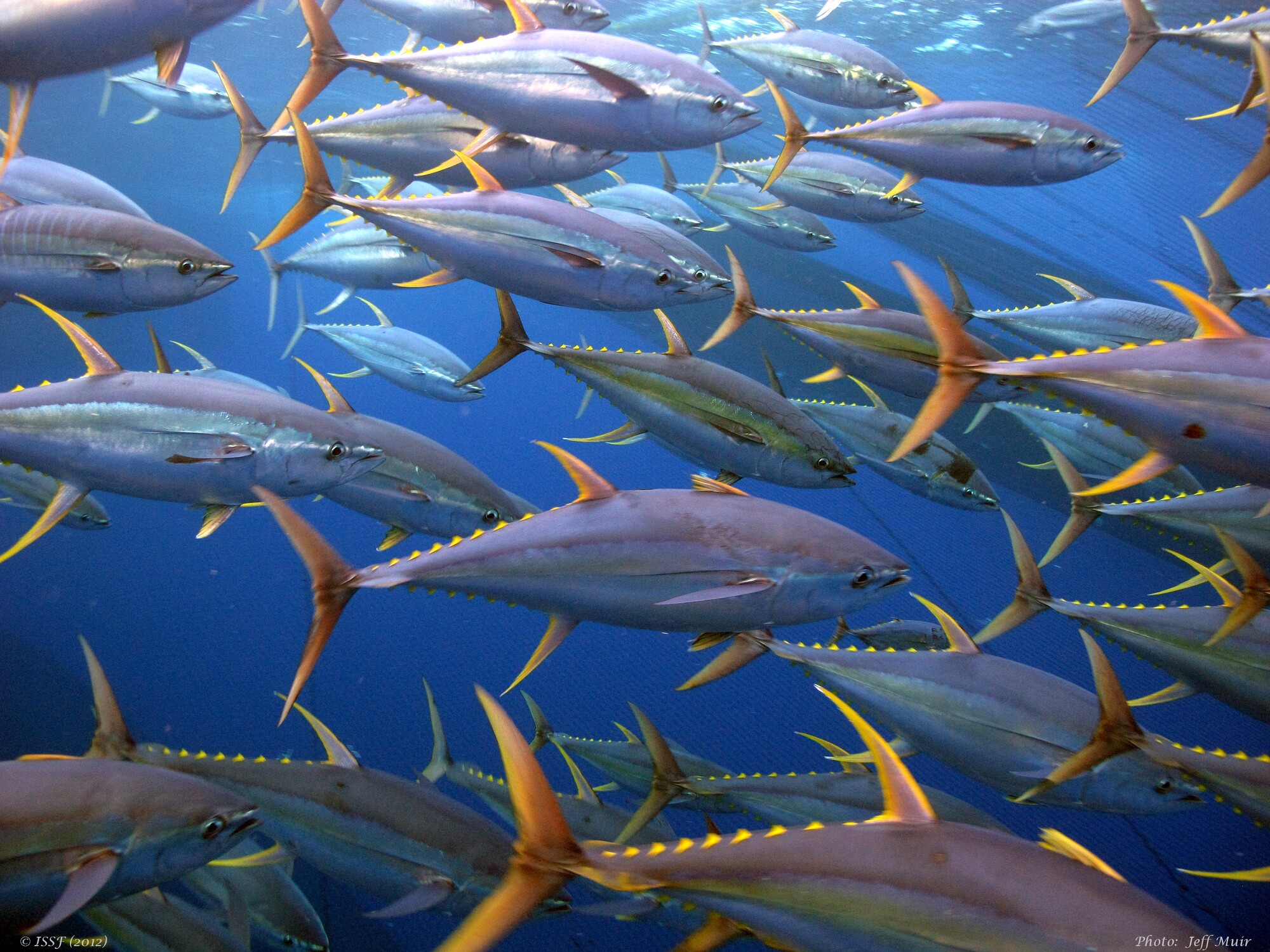As the world’s oceans continue to warm, tuna stocks in the Pacific are expected to head east: away from local economies and into international waters. Newly announced research funding is aiming to help small Pacific nations adapt.
Fourteen Pacific Island countries will receive a grant of NZD $187 million (US$107m) from the UN-based Green Climate Fund to help safeguard their tuna fisheries against the expected impacts of climate change. Together, these 14 countries are custodians of one-third of the world’s tuna catch.
The Regional Tuna Programme will be implemented by the Pacific Community (SPC) with regional partners.
The SMC asked experts to provide background information on Pacific tuna fisheries and how climate change is expected to change the status quo.
Paul Hamer, Principal Fisheries Scientist (Stock Assessment and Modelling), Pacific Community (SPC), comments:
What’s the current state of tuna fisheries in the Pacific?
“The most important tuna species for Pacific Island countries are skipjack, yellowfin, albacore and bigeye. These four tuna species support purse seine, longline and troll fisheries in the Western and Central Pacific Ocean that provide over 50% of the world’s tuna catch each year, that have incredible socio-economic importance for many Pacific Island countries, and contribute significantly to regional food security.
“Recent scientific assessments conducted by the Pacific Community’s ‘Oceanic Fisheries Programme’ and reported to the region’s tuna regional fisheries management organisation, the Western and Central Pacific Fisheries Commission (WCPFC), indicate that stocks of these four key tuna species are in good health and not subject to overfishing.”
What’s expected to happen to tuna stocks in the near future? What are the major threats?
“Tuna stocks in the western and central Pacific Ocean are currently healthy, in part due to management systems put in place by Pacific Island countries to control access, catch and effort in their waters, and through efforts at the WCPFC. Under recent fishing levels, all stocks are projected to remain in a healthy state.
“However, tuna are highly migratory, and their movement and distributions respond to oceanographic variability. A striking example of this dynamic is for skipjack tuna. Skipjack prefer the warmer tropical waters of the western and central equatorial Pacific. This region of warm surface water, referred to as the ‘Warm Pool’, expands to the east in El Niño conditions and contracts to the west in La Niña conditions, and the skipjack tuna stock does likewise.
“This means that the amount of skipjack in Pacific Island exclusive economic zones (EEZs), and therefore fisheries revenues and tuna related food security, can vary depending on the climate. Longer-term conditions influenced by climate change are predicted to result in greater and more persistent expansion of the warm pool to the east. In fact, the warm pool has already expanded in area greatly since the 1970s. This warm pool expansion, combined with other predictions of reduced prey productivity, presents significant long-term risk to fisheries revenue and food security for tropical Pacific Island countries.
“While the level of Illegal Unreported and Unregulated (IUU) fishing is limited by the regional monitoring control and surveillance infrastructure, there remain challenges, particularly on the high seas, which contribute to overfishing risks. Furthermore, Pacific Island countries can readily influence fishing levels in their waters and to a certain degree on the high seas through their negotiations as members of the WCPFC. Changes in tuna distribution, biology and productivity due to oceanographic changes are, however, not controllable, are not well understood and require further study. Failure to appropriately account for these changes in both fisheries assessments and management planning presents a major threat to the monitoring and sustainability of tuna stock and fisheries in the Pacific.”
What issues do we not have enough research on?
“Despite the huge economic value of Pacific tuna fisheries, there remain many gaps in our understanding of those fisheries, the tuna’s biology and ecology, and the ecosystem in which tuna live. These knowledge gaps just increase exponentially as we consider their earlier life stages.
“While aspects such as growth and reproductive biology still require more information across the species’ ranges, a critical gap is research to understand what influences reproductive success or ‘stock replenishment’ of tuna. Greater understanding of the ecology of tuna larvae and small juveniles and the influence of oceanographic conditions on their survival is needed. This is logistically difficult and expensive work, requiring field sampling programs and high-resolution oceanographic data, which has been challenging to obtain for tropical regions using satellite imagery due to cloud cover, and the sheer size of the Pacific Ocean.
“It is remarkable how little field-based research and oceanographic observation has occurred in the warm pool region, the critical habitat for tropical tuna and a global heat engine. We need to start filling this critical gap if we are to develop more reliable, higher resolution models that can predict how changing climate and ocean conditions will influence tuna productivity and distribution in the Pacific.”
Conflict of interest statement: “The author declares no conflict of interest related to the research and commentary presented in this interview. The views expressed are based on the author’s professional knowledge and research experience in tuna fisheries and related ecological studies. No funding sources, personal or professional relationships, or external influences have impacted the independence or objectivity of the analysis provided. The author has not received any financial support or benefits that could be perceived as influencing the content or conclusions of this work.”
